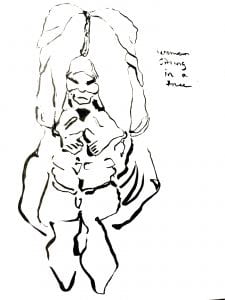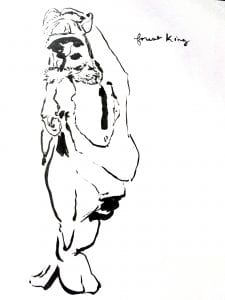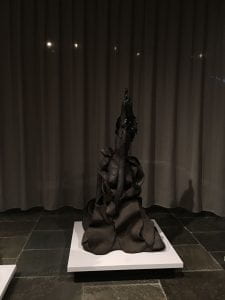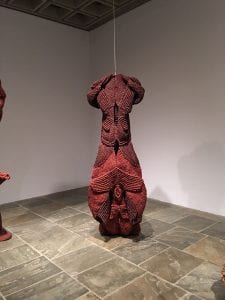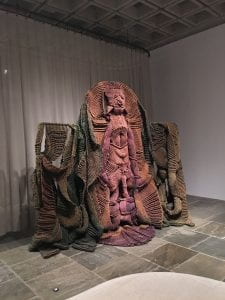Phenomenal Form
Mrinlalini Mukerjee was born in Mumbai to artist parents in a post-colonial British India. Mukerjee was raised with a conscientious relationship to the natural world and received an education at M.S. University in Baroda, where she was taught by one of her father’s students, K. G. Subramanyan. This education allowed Mukerjee to root herself in Indian craft tradition, while also introducing her to her unique medium of fiber. Mukerjee would use this fiber to knot great sculptural works of steadily increasing scale and phenomenal form. Later Mukerjee’s modern methods would expand across other mediums, such as ceramic and bronze, while the forms of her sculptures remained deeply rooted in representations of nature, deities, and sexual imagery.
On the third floor of the Met Breur, Phenomenal Nature: Mrinalini Mukherjee, presents a collection of the artist’s works in a chronological timeline exploring the different phases of her artistic career. The pieces are displayed on an organically winding floorplan path, in a dimly lit environment which spotlights the art. Floor to ceiling curtains both separate and unite the different sections aligning with the different time periods of Mukerjee’s works. The exhibition begins with Mukerjee’s earlier on fiber works in the 1970s, with the first Squirrel and Waterfallbeing the more two-dimensional of all the pieces. It progresses quickly into Mukerjee’s larger scale knotted fiber figures, towering deities and anthropomorphic forms included. The latter half of the exhibition and space focuses on Mukerjee’s later works in the nineties and post 2000s, of ceramic and bronze mediums as well. Consecutively and continuously the artist’s drawn inspiration from Indian tradition, her admiration for nature, and themes of sexual tension are present.
Mukerjee’s work has an evokes what it means to be experimental and expressive, with her newfound sculptural medium being used to narrate figural stories. Her fiber kings and goddesses tower over the viewer, with the shadows they create lying close to the spirituality that inspired the artist herself. Mukerjee’s dying of the fibers further emphasizes the forms within the character’s brightly colored bodies. Her tradition based subject matter plays well amongst other sexual innuendos in her work. The evolution of her career is also well-represented in the exhibition, as you can see the artist’s early beginnings in her fiber work, to her final bronze sculptural pieces. This exhibition compares to the Sheila Hicks exhibition presented at the Centre Pompidou last year. Hicks and Mukerjee share the method of taking a textile based craft to create imposing large-scale forms.
Mrinlalini Mukerjee is seen as a modern/ contemporary artist responsible for 3-dimensional creations rooted in representations of nature, deities, and sexual imagery. The artist’s background and education inspired Mukerjee to put a craft emphasis on her work and also developed a clear manifesto. In this exhibition the viewer watches the artistic career of Mukerjee play out as we traverse across decades and mediums. That which remains constant is the phenomenal form of the artist’s creations.
Sketch 2: Van Raja (King of the Forest, 1981 fiber
Sketch 1: Vanshri (Woman and tree), 1994 fiber.
Night Bloom III 1999-2000 ceramic
Yogini (Female Seeker) 1986 fiber
Van Raja II (King of the Forest) (1991-94) fiber

